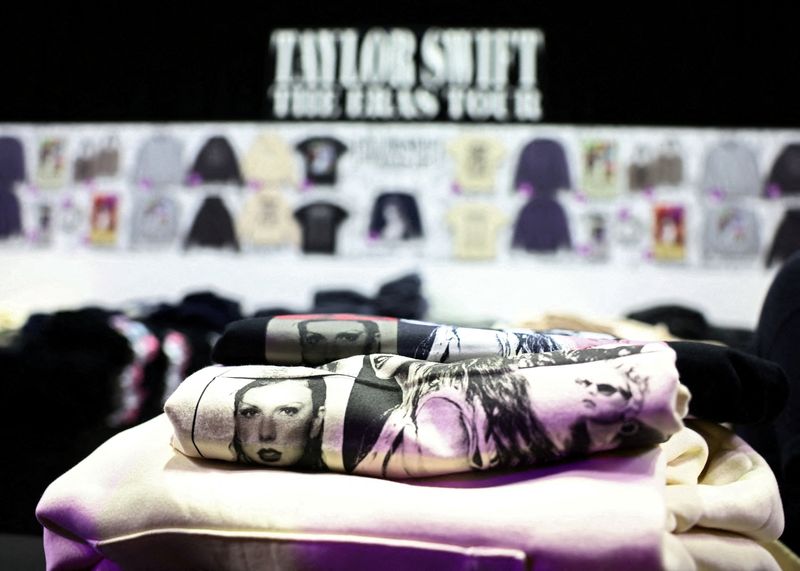SYDNEY (Reuters) – Australian retail sales rose modestly in February as packed Taylor Swift concerts boosted spending on clothing and eating out, though annual sales growth remained meagre as high interest rates ate into incomes.
Data from the Australian Bureau of Statistics (ABS) on Thursday showed retail sales rose 0.3% in February from January, when they were up 1.1%. Analysts had looked for a rise of 0.4%. The series has swung wildly in recent months as changing spending habits played havoc with seasonal adjustments.
Sales of A$35.9 billion ($23.43 billion) were up just 1.6% from a year earlier, a miserly result given the country’s rapid population growth.
Seven sold-out Taylor Swift shows in Sydney and Melbourne led to increased spending on clothing, merchandise, accessories and dining out, said Ben Dorber, ABS head of retail statistics.
“Looking past the temporary and one-off impact of the Taylor Swift concerts, underlying growth in retail turnover was up only 0.1% in trend terms. After a period of higher volatility from November through to January, underlying spending has stagnated.”
The pressure on consumers is a major reason that the Reserve Bank of Australia left interest rates unchanged at 4.35% this month for a third straight meeting and softened its stance by dropping a tightening bias.
However, Governor Michele Bullock has not ruled anything in or out on policy, saying the risks are “finely balanced”. Markets are confident the next move in interest rates is down but any rate relief might not come until August or September.
The February retail sales report showed food retailing dropped 0.1% in the month and household goods retailing fell 0.8%.
“Consumer spending is in the midst of a very weak period, with high interest rate and inflation putting pressure on household finances,” said Sean Langcake, head of macroeconomic forecasting at Oxford Economics Australia.
“The outlook will improve throughout the year as inflation wanes and real wage growth improves. But momentum in sales will be patchy, especially over the first half of the year.”
($1 = 1.5321 Australian dollars)
